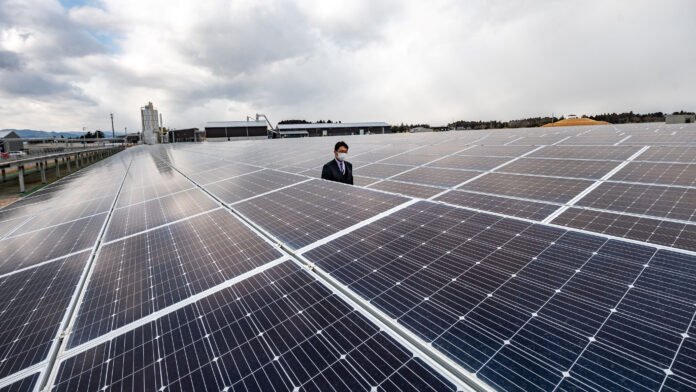Amid rapidly growing demand, India’s energy sector faces two key challenges: providing affordable energy to residential and industrial consumers and preparing energy infrastructure for the growing renewable energy (RE) base. India’s network infrastructure is aging and transmission and distribution (T&D) losses are over 15 percent per year, more than three times higher than in the United States, underscoring the urgency of reforms.
Artificial intelligence (AI) can be a powerful tool to improve the way India generates, distributes and consumes energy. Policymakers can use AI to design policies that are impact-driven, while focusing on developing governance frameworks for the use of AI in energy systems. AI can be used to optimize the electricity grid, reduce inefficiencies and integrate decentralized renewable energy sources. AI can also play a critical role in how public-private partnerships (PPPs) are designed to integrate technology into the energy system and build workforce capabilities that are fit for purpose.
Using AI for effective policy design
Energy management at both system level and consumer level can be optimized through AI integration. Unlike traditional approaches to policymaking, AI enables agent-based modeling that can create different scenarios to complement the decision-making tools used by policymakers to prioritize different interventions. For example, these models can anticipate how incentives for renewable energy adoption could impact different sectors, optimizing both impact and cost-efficiency. As a result, government expenditure can be minimized and resources reallocated to other areas.
The United States has identified priority areas including network planning and resilience to deploy AI. In addition, the United States is exploring how AI can be used as a tool to accelerate the pace of deployment of clean energy projects. This includes using AI tools to effectively engage with communities and other stakeholders, analyzing data to ensure better social and environmental outcomes, and identifying project locations that are conducive to environmental goals. India can use this as a precedent to create tailor-made solutions for its unique energy landscape.
AI for cleaner energy systems and distributed renewable energy integration
AI can be used to integrate distributed renewable energy sources such as solar, wind and rooftop bioenergy with the electricity grid. This is critical given the policy momentum in India to add up to 30 gigawatts (GW) of distributed solar capacity under the Prime Minister’s Surya Ghar Yojana (Solar Roofs Plan). AI algorithms can optimize the performance of these systems, predict renewable energy generation and improve the stability of the electricity grid through real-time data analysis.
For example, India is looking to install 250 million smart meters that not only aim to improve the operational efficiency of energy systems but also generate invaluable data that can be used to design better policies and programs through AI integration.
A demonstrated example of using AI for improved grid management is the integrated virtual power plant (VPP) systems, which allow consumers to merge decentralized energy sources such as rooftop solar panels and battery storage systems into one controllable entity. Energy supply and demand can be managed in real time by using AI algorithms for VPPs and in turn maintain grid stability. For example, Australia has successfully used VPPs to balance loads, manage the electricity grid and integrate renewable energy. By adopting AI-based VPP systems, India can manage decentralized renewable energy more effectively, reduce pressure on its aging energy infrastructure and defer costly upgrades to transmission systems.
Mainstreaming AI in public-private partnerships
Effective collaboration between technology companies and energy suppliers is crucial to scale AI applications across the sector. Government programs can be designed to bring new technologies and capacity building capabilities to India through PPP models. For example, these partnerships could pave the way for AI-driven predictive maintenance to reduce grid downtime and improve energy efficiency, thereby reducing T&D losses.
At the same time, it is important to invest in training programs to upskill and reskill the workforce in AI-driven energy systems. India can potentially create 3.4 million jobs by 2030 to achieve its 500 GW renewable energy target. The momentum towards AI and energy is an opportune time to develop skilling programs that ensure India remains competitive in the global AI landscape by developing relevant skills in the workforce. California’s recently announced AI regulations provide necessary lessons that require AI to be rigorously tested to prevent misuse and increase data transparency. The five bills passed introduce stricter privacy controls for consumer opt-outs and regulations regarding the transparency, use and liability of AI models. Similar practices can be applied for AI in energy systems and India can take an example.
Integration of AI-driven technologies can optimize grid operations, reduce T&D losses, and facilitate the large-scale integration of renewable energy into the power grid. AI is poised to become a game-changing technology that can facilitate India’s energy independence goals while ensuring clean, affordable and reliable energy is available to all. To do this, the government must focus on leveraging AI to create appropriate policies and mechanisms that have an impact on improving system efficiency and innovation.
Akanksha Golchha is a fellow in the India and Emerging Asia Economics Chair at the Center for Strategic and International Studies in Washington, DC





